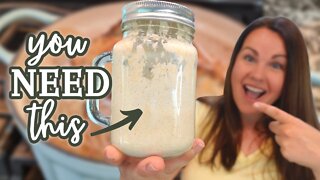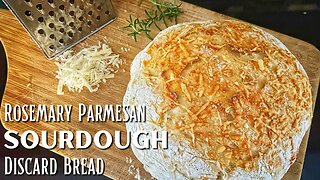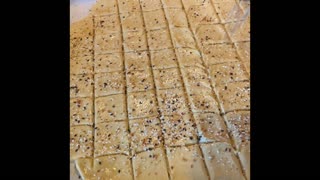TOO EASY SOURDOUGH STARTER NO FEED OR DISCARD - EASILY STORED SET IT- AND FORGET IT TYPE SOURDOUGH
About ½ cup of flour (do not use bleached flour)
Good natural yoghurt (about 2 heaped tbsp.) - do not use pasteurized
About 1/3 cup water (more or less depending on consistency)
A few caraway seeds (about ½ tsp)
1 tbsp. Rye flour (optional)
The higher protein flour you use, the faster the fermentation will set in.
All measurements are approximate, as the bacteria is not demanding and will take over the starter.
The better the environment for the bacteria, the better the fermentation and your starter will be.
The starter should be a little thicker than a pancake batter.
Once combined, let it sit, with a breathable top on the countertop for about a week.
You can stir gently every day, but this is really not necessary
– just as a reminder that you have something on your countertop.
After a week, take the sourdough and start mixing in more flour
Any flour – just not bleached, this will kill off your sourdough.
Add enough flour to dry out your starter – when you think you’ve added enough – add a little more.
Once you are satisfied that your starter is dry, place it incased in flour in a jar,
or even inside your bag of flour for safe keeping.
To rehydrate the starter:
The day before you bake:
use about a golf sized parts(s) of your dehydrated starter.
Add enough water to get it to a soft dough consistency
Leave it covered on your countertop overnight
– Your sourdough should be alive and active by the time you are ready to bake.
I usually use around 1/5 of the grams in flour (for 500g of flour, I use 100g sourdough).
Depending on the strength of your sourdough and the flour you use in your recipes,
you can do more or less.
A lighter bread (white bread) can use less, a heavier bread (dark rye etc) will use more.
-
 18:34
18:34
Feeding the Byrds
1 year agoBEGINNER SOURDOUGH RECIPES | SOURDOUGH RECIPE IDEAS | FEEDING THE BYRDS
253 -
 1:04:44
1:04:44
Back to Country Homestead
3 years ago $0.01 earnedSourdough Starter Series
2101 -
 3:50
3:50
survivalhomesteadteachingfarm
5 months ago $0.47 earnedWhat is the difference between sourdough discard and sourdough starter??
149 -
 11:01
11:01
Resistance Chicks
8 months agoDay 2 Feeding New Sourdough Starter
1.05K1 -
 14:59
14:59
HomesteadOnAPrayer
6 months ago $0.12 earnedQuick & Easy Sourdough Discard Bread (Rosemary Parmesan)
149 -
 2:45
2:45
Holstein House
1 year agoStoring your sourdough starter.
18 -
 5:27
5:27
Pocket Full Of Arrows
1 year agoSourdough Starter Tips
241 -
 21:02
21:02
Politics, Permaculture and Food
2 years agoSourdough starter in 4 easy steps
17 -
 13:18
13:18
HomesteadOnAPrayer
1 year ago $0.01 earnedSourdough Cheddar Bread | Easy Sourdough Discard Recipe
59 -
 0:31
0:31
Pocket Full Of Arrows
1 year agoWhat is my favorite thing to make with Sourdough discard?
9